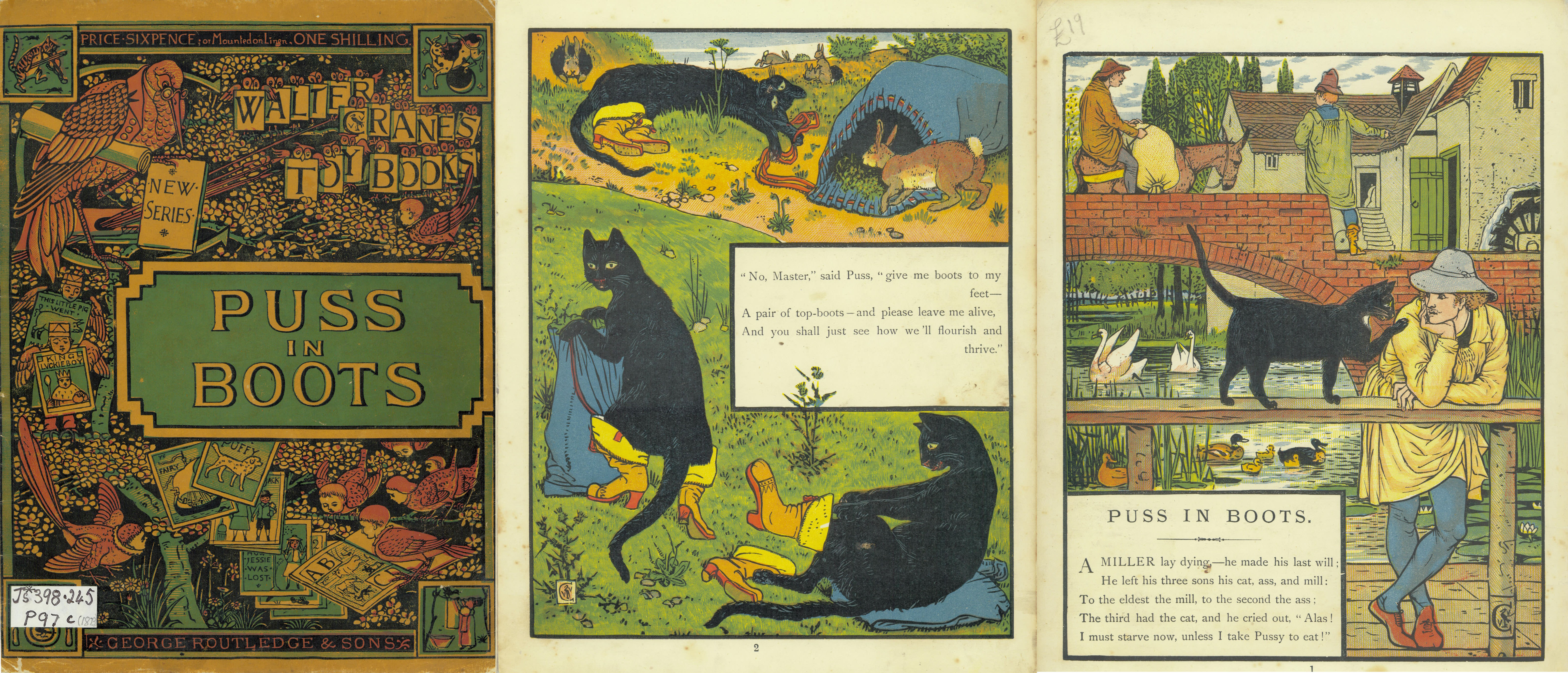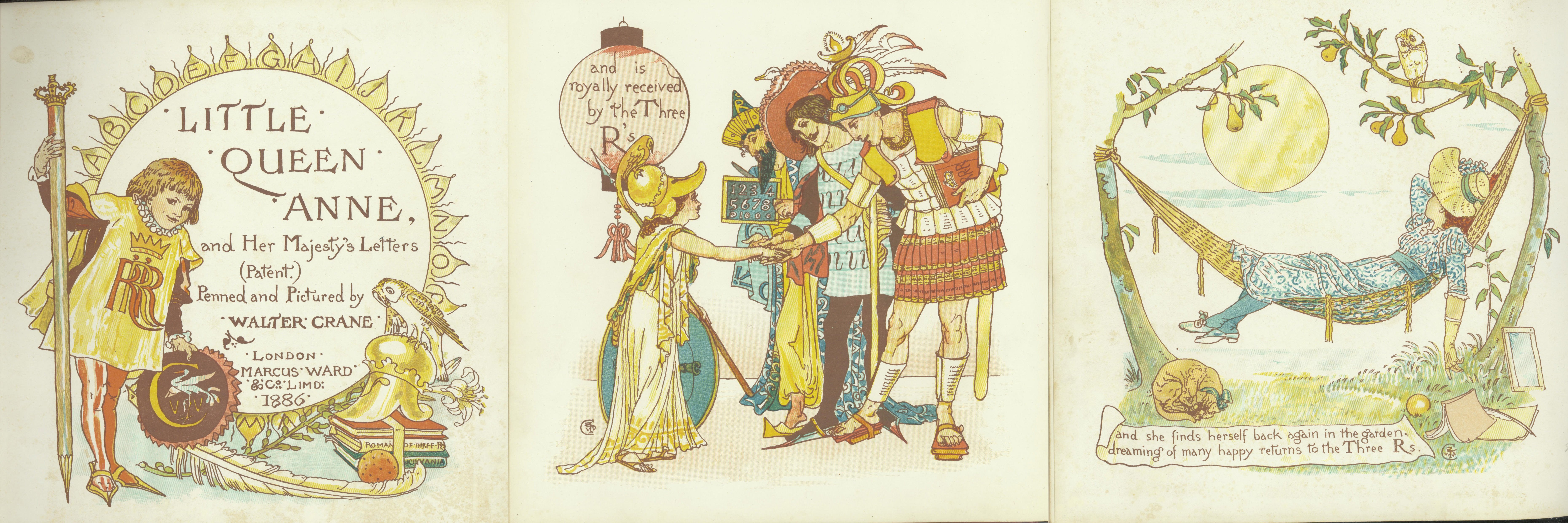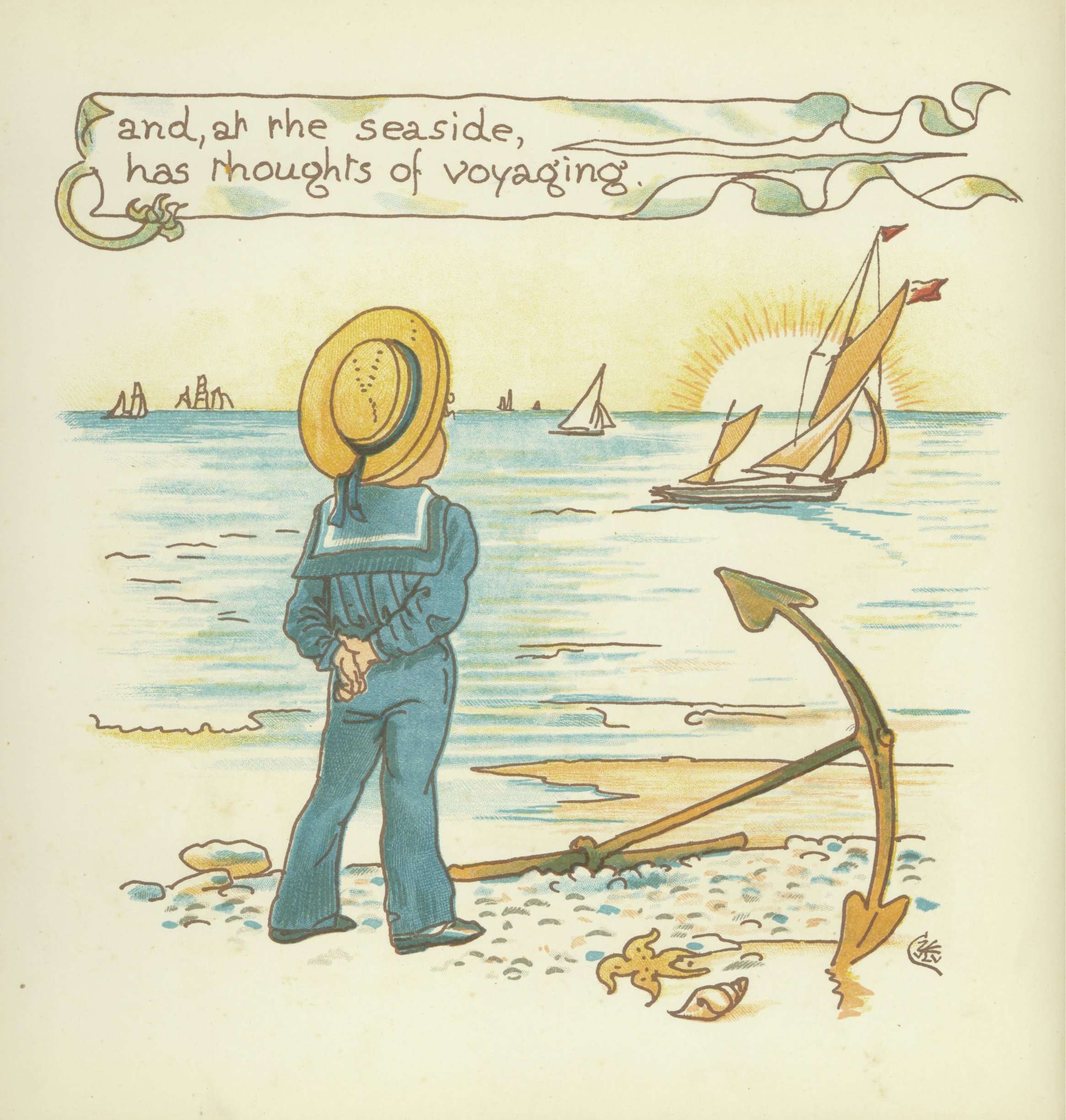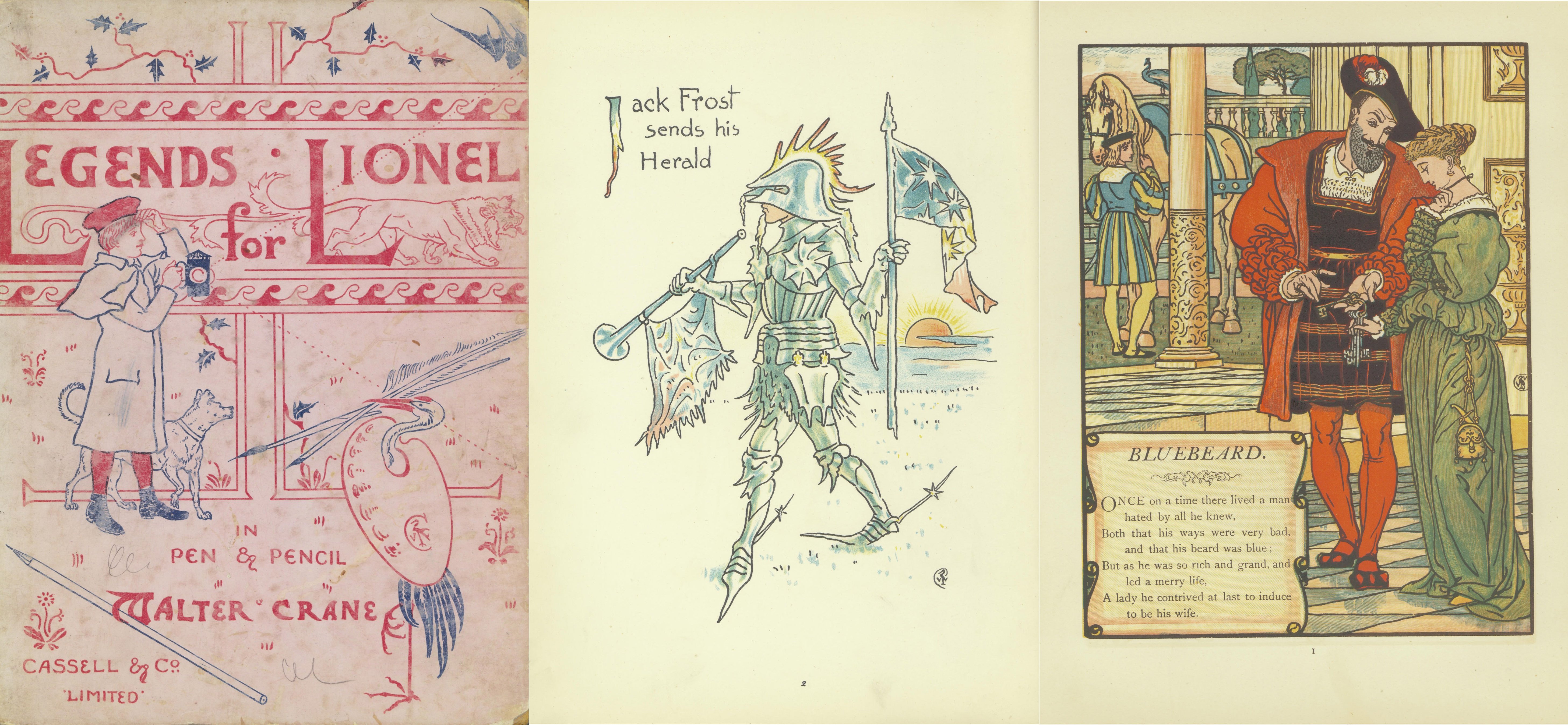Walter Crane (1845-1915) is today best known for his ornately illustrated 19th century children’s books. He designed artwork for the British master printer Edmund Evans in a variety of capacities for ten years, before Randolph Caldecott and Kate Greenaway joined him as Evans’ triumvirate of children’s Toy Book illustrators.
In life, Crane was inspired by the ideals of socialism and in particular the work of William Morris. Historian Isobel Spencer says that Morris was the great figurehead for socialism in the 19th century while Crane was the artist of socialism: ‘[Crane’s] designs were published in left-wing papers on the eve of workers’ rallies. They were sold separately to be pinned up in homes, factories, and meeting places, and they were stitched in the brilliant silks of trades-union banners.’ (Spencer, 1975, pp. 8-9)
Formative working experiences developed Crane’s social awareness. In 1859, aged 14, he entered one of the best engraving workshops in England, that of William James Linton, master engraver, writer and champion of political freedom. Linton sent Crane to make studies of animals at the Zoological Gardens where Crane learnt the importance of spontaneous line. Animals remained his favourite subjects.
At the age of 19, Crane designed covers for Evans’ yellow backs, an increasingly popular format of cheap novel. These mass produced books were bound between straw boards, with yellow glazed paper and a picture printed in colour on the covers.

Yellow backs were an increasingly popular format for cheap novels. Whom god hath joined, 1891; Neuroomia: a new continent, 1894; A living statue, 1893
In 1865 Evans saw the potential of Crane’s art for the growing children’s book market and suggested Crane’s illustrations to the British publisher Frederick Warne for his Sixpenny Toy Book Series and subsequently a similar series for Routledge in America.

Puss in boots by Lucy Crane and Walter Crane, 1873
Crane’s trademark style from the 1870s onwards was compositions with strong outline and clear bright colours. In Puss in boots (1873), Crane employs black to striking effect. In the delightful picture of Puss begging for boots, his master is Crane’s self- portrait as a young man. The work revealed his skill as an animal draughtsman, honed in the Zoological Gardens.

Little Queen Anne and Her Majesty’s letters by Walter Crane, 1886
In his later book Little Queen Anne, and Her Majesty’s Letters (1886), Crane is quite ornate but decorative borders no longer delineate both text and image. Instead the images contain a sense of space while the text by Walter’s eldest sister Lucy, is playfully placed inside fine borders including open fans, lamp shades, a slate and a globe of the world.

Young Dick from Slate and pencil-vania, 1885
Crane brings a touch of island beauty to the adventures of a boy named Dick in Slate and pencil-vania (1885).

The cover and Jack Frost from Legends for Lionel by Walter Crane, 1887, (left and centre); Bluebeard from Bluebeard’s picture book by Walter Crane, 1899 (right).
His illustrations for the story of Jack Frost in Legends for Lionel (1887) unequivocally evokes winter while the protagonist in Bluebeard’s picture book (1899) is suitably authorative.
References
- Walter Crane (1845-1915) Victorian web: literature, history and culture in the era of Victoria
- Walter Crane: The arts and crafts, painting, and politics, 1875-1890, by Morna O’Neill, Yale University Press, New Haven, 2010.
- Walter Crane, by Isobel Spencer, Studio Vista, London, 1975.
- Walter Crane as a book illustrator, by Rodney K. Engen, Academy editions, London, 1975.
- Go to an outline of Library’s Children’s Literature Research Collection and to pursue more research go to the Children’s Literature Research Guide


I am a school librarian and taking college courses about libraries. Your collections are charming and enthralling to me, artist, mom and book lover. I think you should be very a proud to work there.
I am a school librarian and taking college courses about libraries. Your collections are charming and enthralling to me, as artist, mom and book lover. I think you should be very proud to work there.
Hi Kathryn,
Thanks for your feedback and I am very pleased you enjoy the Illustrated Children’s Books blog series and in particular Walter Crane. The artists we highlight are inspirational and I hope these blogs provide an impetus to your own creative work.
I have such a personal commitment to research into children’s literature so send my best wishes to you for your studies.
regards,
Juliet
Juliet O’Conor
Hi. Thank you for your post. I love Crane’s work very much and your collections look really impressive. Cheers
Hi Danny,
Sorry for such a late response but this blog was kindly mounted on our website while I took extended leave. I too am a fan of Walter Crane’s work so pleased to read that you are as well. For future reference, Crane’s works are viewable upon request in the Library’s Heritage Collection Reading Room.
Cute little picture of a crane (bird) encapsulated by the letter C hidden in each of the illustrations that I looked at.
Hi Susan,
Yes, Crane’s logo appears on most of his children’s book illustrations. It’s very clever.
This looks great and beautiful but where is the information on where it is on in the library and dates?
Hi Lissa,
Sorry for such a late response but this blog was kindly mounted on our website while I took extended leave. This series of blogs on Illustrated Children’s Books is designed to electronically showcase some of the strengths in our Children’s Literature Collection holdings. Unfortunately there is no exhibition of these works at present, but selections are incorporated into the History of the Book exhibition. However the Walter Crane material can be pre-ordered for viewing in the Heritage Collection Reading Room on a date to suit you.
Very informative post and grateful for your effort!
Hi Gurdeep, Thank you for your comment. We have a good selection of Walter Crane’s illustrated children’s books in the rare component of the Children’s Literature Collection and if you are in Melbourne you could pre-order items for viewing in our Heritage Collection Reading Room.
regards,
Juliet